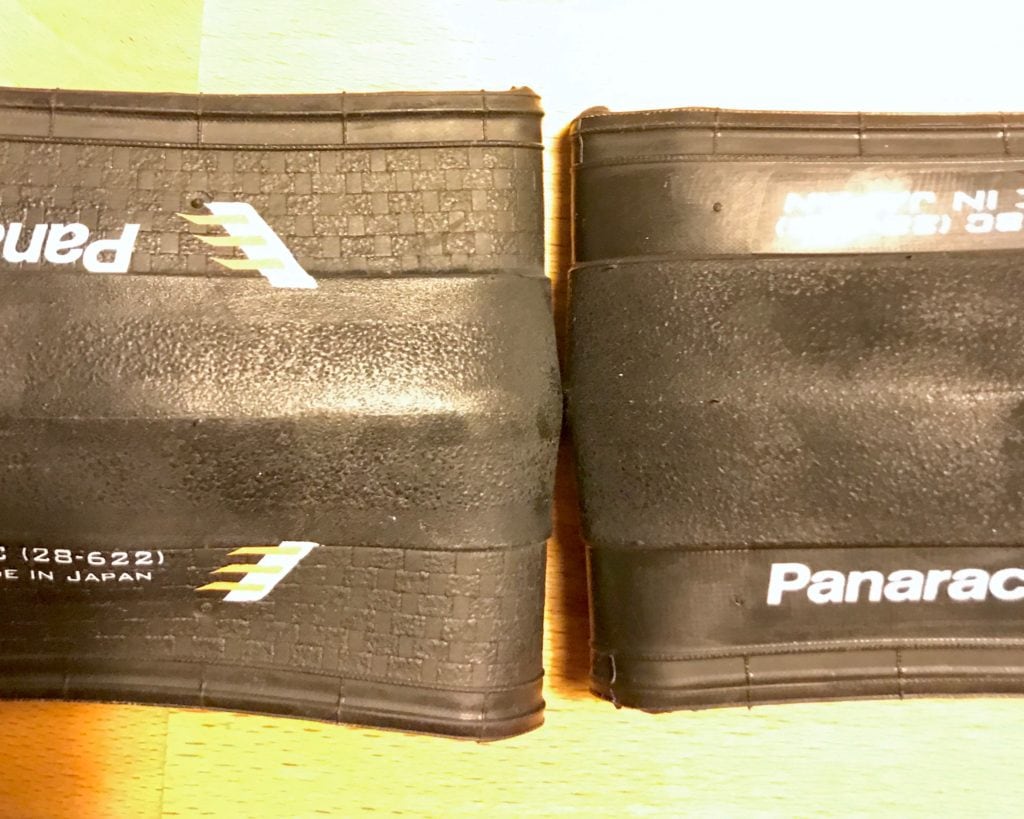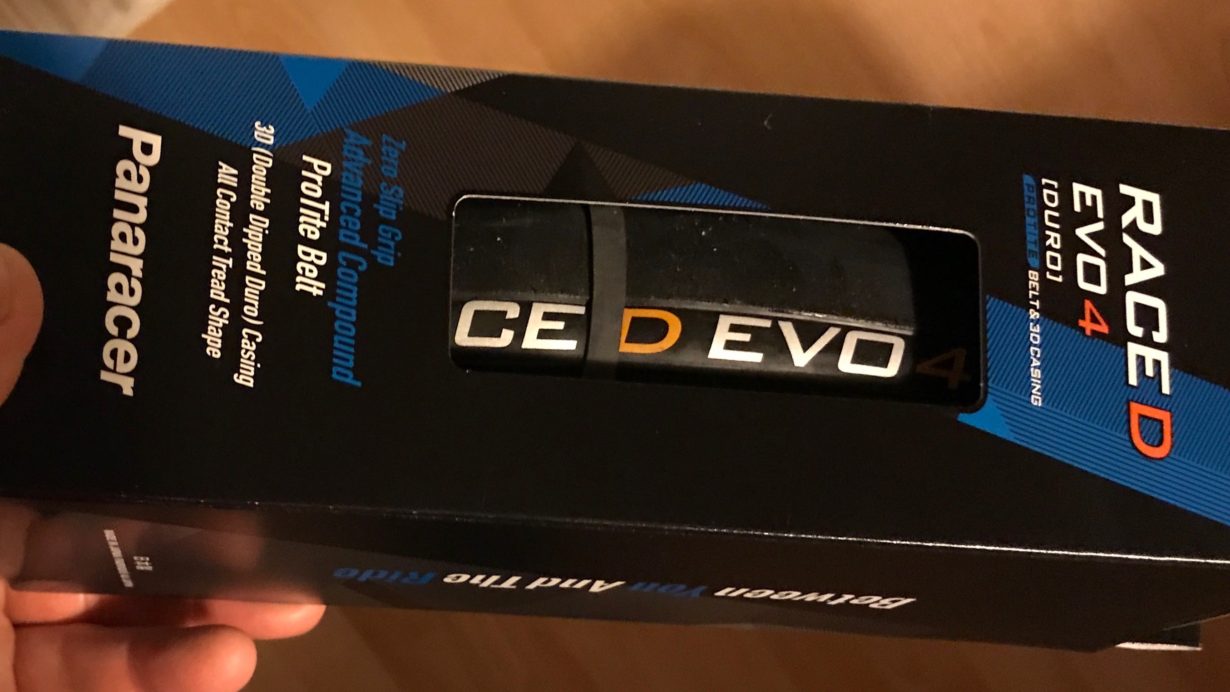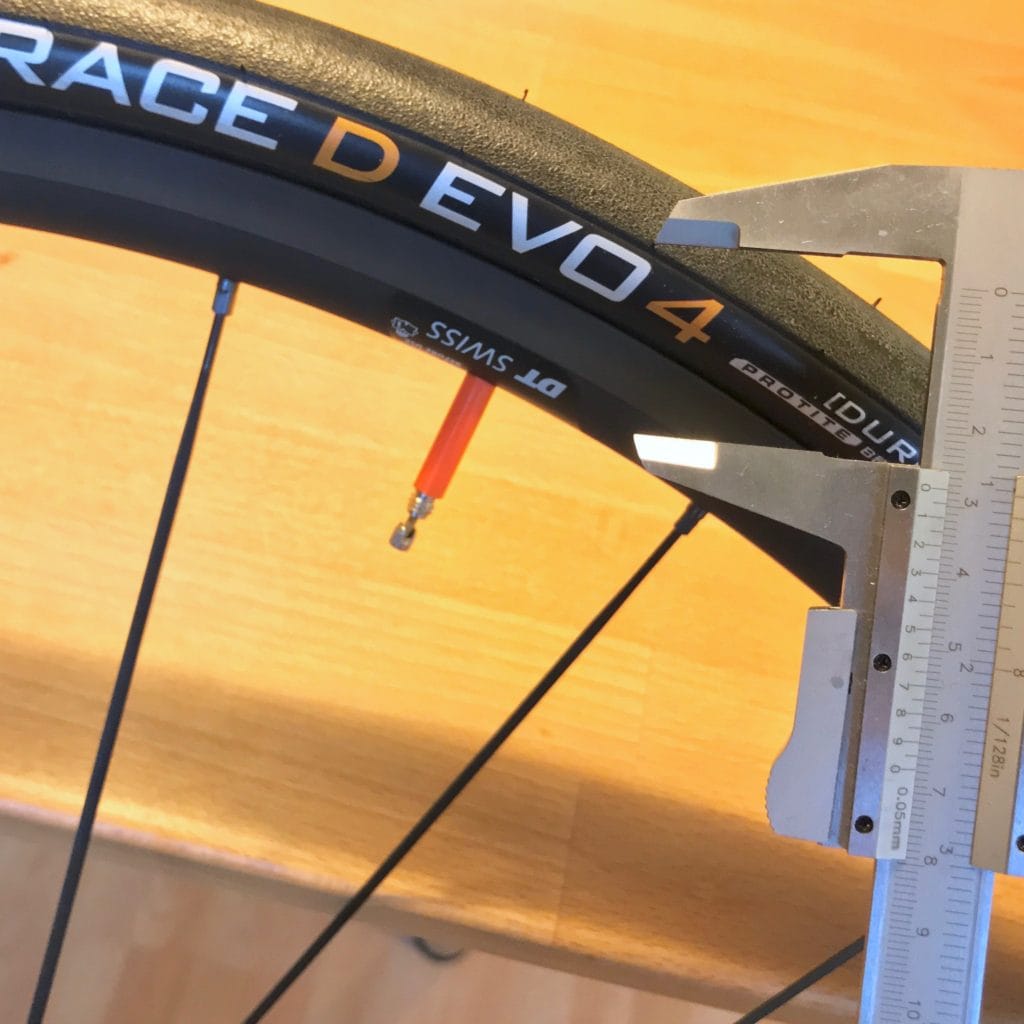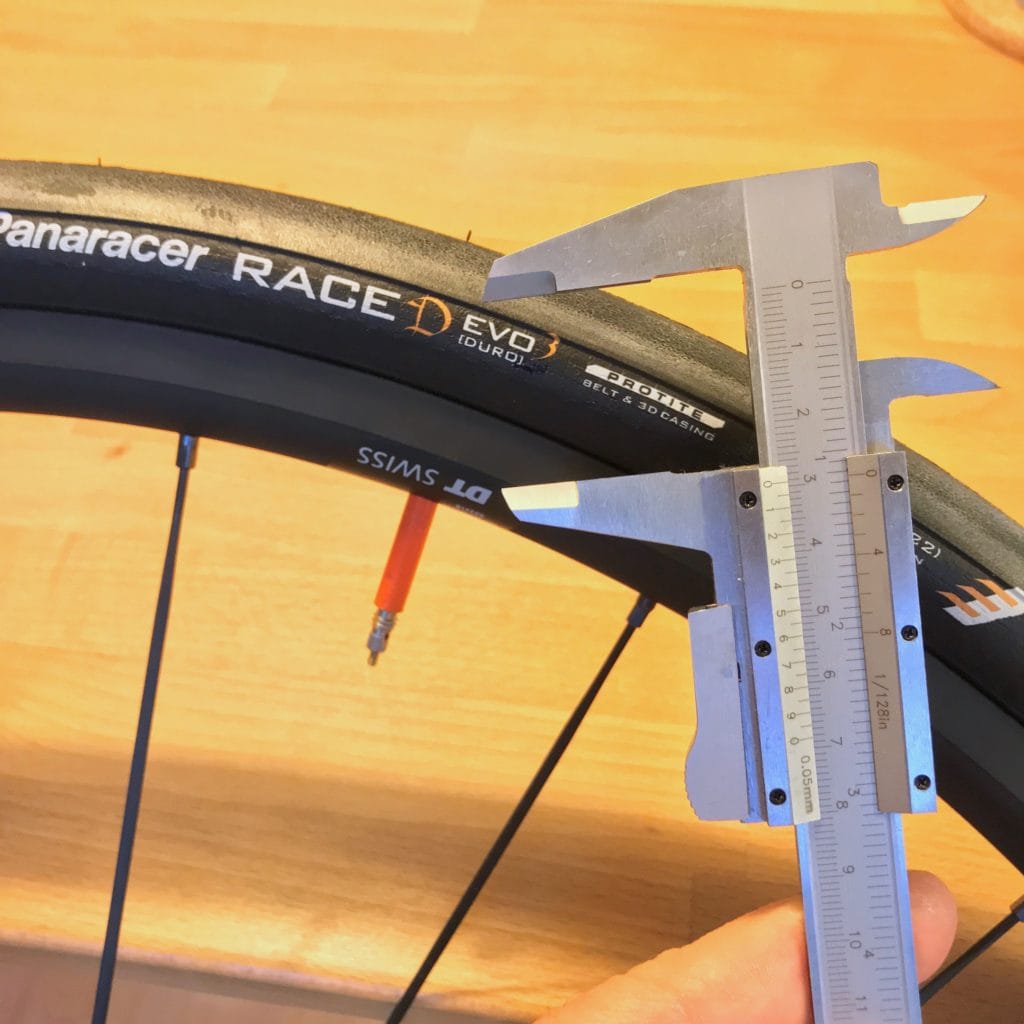When I saw the newest, fourth generation of my favorite tyre advertised, I couldn’t resist and ordered a sample to see where Evo 4 is different from Evo 3.
The “old” Race D Evo 3 (third generation)
The Race D Evo 3 in its 28 mm variant literally ballooned up to a measured 30 mm equivalent at 80 to 90 PSI. It was the largest diameter tyre I could fit in my CAAD12 frame and fork while still having sufficient clearance.
Wider is better, in most cases, so this is one of the characteristics I cherish most about the tyre. And larger volume also allows for lower pressure. Accordingly, I tuned it down a bit and found my ideal setup for typical bikepacking rides over longer distances.
Such rides roll on mixed surface roads of mostly tarmac (various qualities) and some interspersed gravel and dirt, sometimes cobblestones. Altogether, non-tarmac surfaces mostly amount to a range of 10~20% of total distance. Riding with moderate baggage, I ended up at a preference of 60 to 70 PSI (front) vs. 65 to 75 PSI (rear), depending on baggage distribution and road quality.
What changed?
The “Race” series tyres are slicks*, yet I have only once (again, during the TPR) slipped in a (very tight) corner, partly because of lack of grip, but most likely due to a combination of my tiredness (speed too high, reflexes too slow) and greasy, wet tarmac covered in a thin layer of cow or sheep manure 😉
*=Yes, they feature a “MicroFile Pattern”, very tiny knobs irregularly distributed over the thread.
Now, for the new Evo 4, Panaracer advertise the tyres as offering reduced rolling resistance and still improved grip. Ah yes, they are supposed to weigh approximately 10 grams less (28 mm variant).
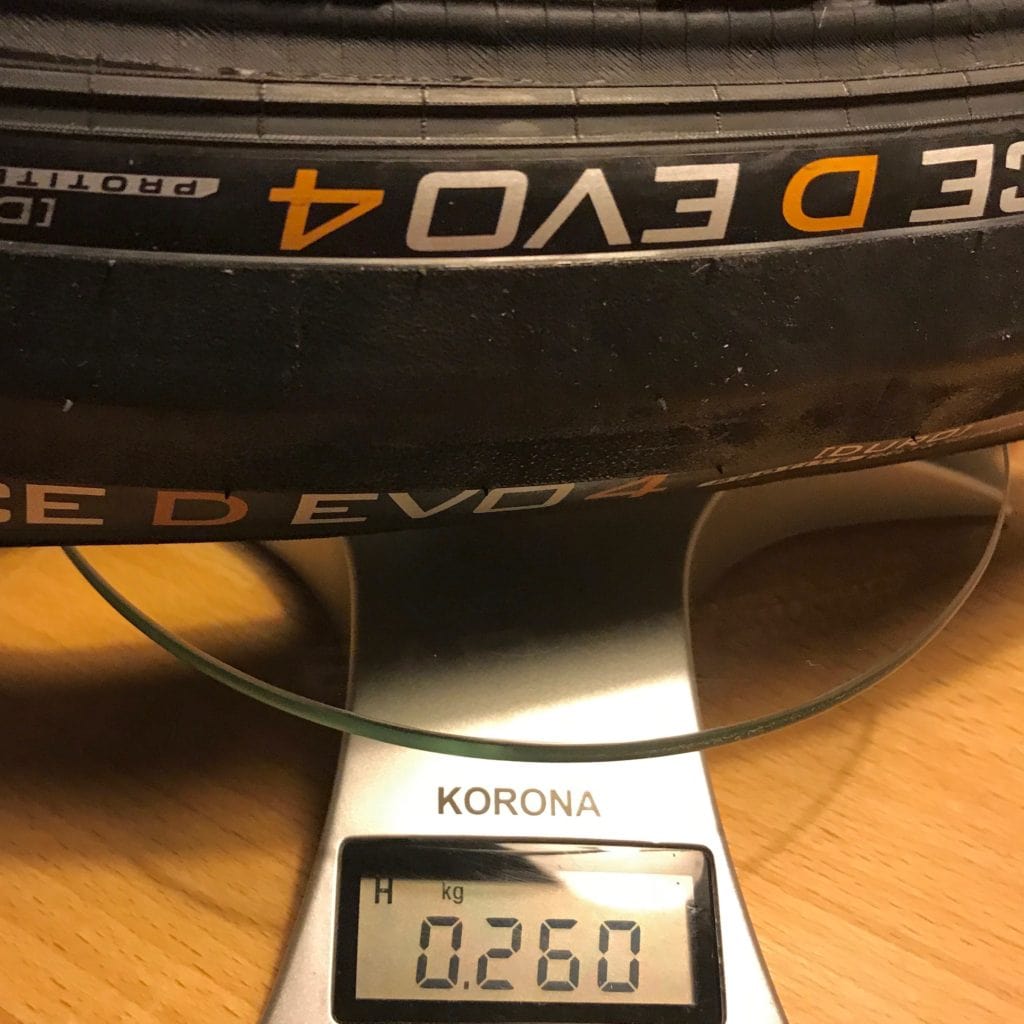
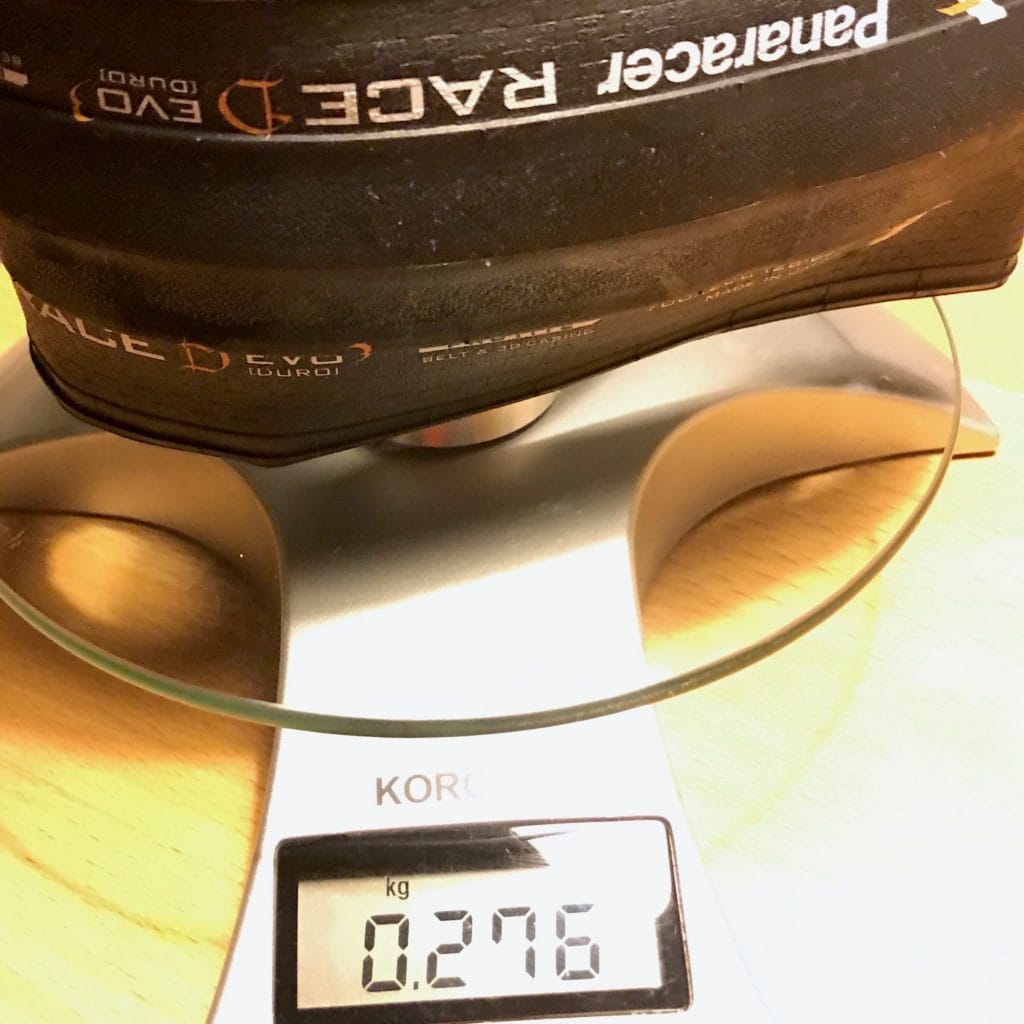
I’m actually very happy with the 3rd generation already, so I was more interested in what other changes are not advertised, and how the specified weight savings are achieved. Also, the one drawback of this extra robust flavour of the “Race” series is that they are very tough to mount, especially on tubeless-ready rims with a more pronounced “hook” as part of the rim profile. Here, I hoped for improvement.
When comparing one new, unused sample each — one brand-new Evo 4 and one Evo 3 — I had the impression that the new generation was slightly easier to mount. Which would make for a great improvement for these ultra-durable tyres. Usually, it takes patience, force and many f-words to mount the tyres for the first time, and then a few hundred kilometres of riding to make them malleable enough for fixing punctures not being additionally annoying because of the toughness of the tyre itself.
Other than that, there are some minor changes to dimensions, weight and texture of the tyre flanks. Also the thread is now fully covered in the coarse, MicroFile pattern. If not for a compound change, that may also account for the supposedly improved grip.
But see for yourselves in the pictures.
Live test only in 2020
What remains to be experienced in a “live” scenario is, if the diameter reduction by 1.3 mm is offset by whatever (hypothetical) compound and (visible) build changes Panaracer introduced:
- Does it prove to be easier to mount than the Evo 3?
- Can I run the Evo 4 at the same pressures, or do I have to up by ca. 10 PSI?
- Does the Evo 4 still offer a similar cushioning effect as the Evo 3 (27.7 vs. 29.4 mm effective width)?
- Is the grip still as reliable (27.7 vs. 29.4 mm effective width)?
- Will the tyre wear more quickly?
At least for this winter and probably into the first half of 2020, I’ll stick to my proven Race D Evo 3 (3rd generation): They can be found for as little as 21 Euros each and have really served me extraordinarily well over the past 2+ years.
But it’s always good to know what lies ahead.
